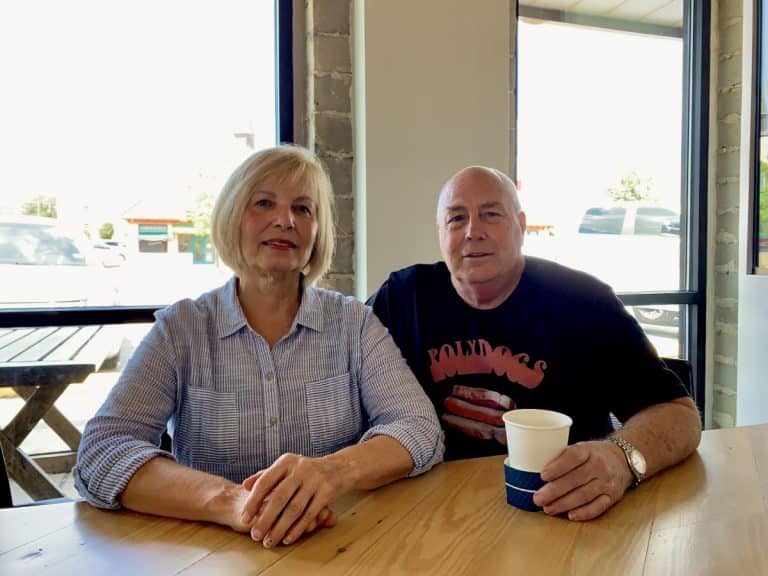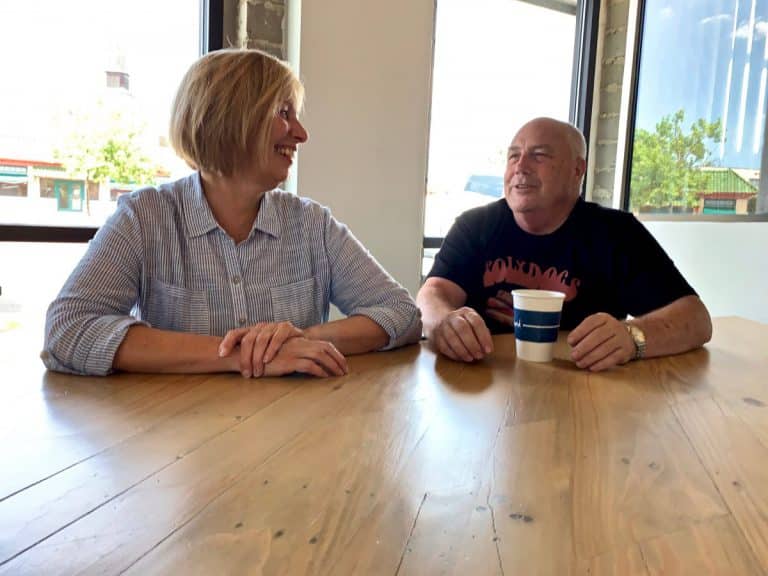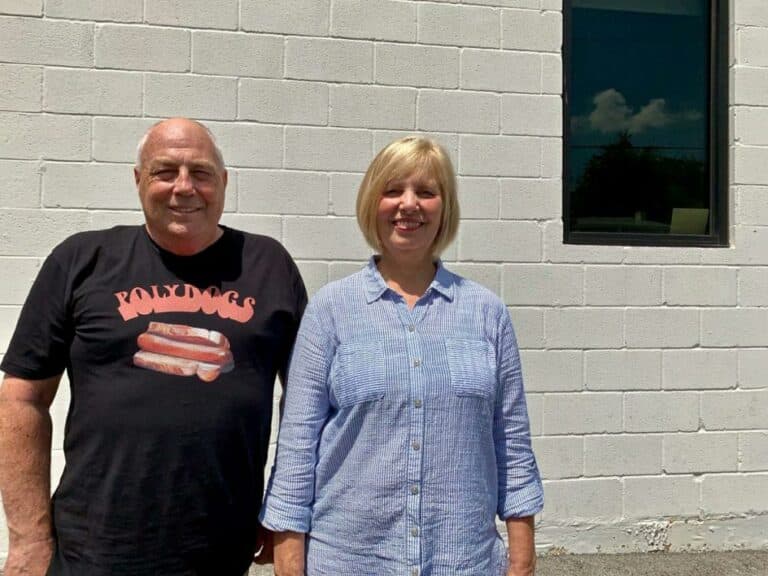A picture is worth a thousand words. Wait, letís revise that a bitÖ A good picture is worth a thousand words. As an assisted living professional, you know a good photo can showcase your communityís true spirit. Weíre not...
A picture is worth a thousand words. Wait, letís revise that a bitÖ A good picture is worth a thousand words.
As an assisted living professional, you know a good photo can showcase your communityís true spirit. Weíre not here to talk about senior living stock photos. These are tips for your team members to take pictures of seniors sitting in the sunshine to new heights.
Photos are great to show online and in your print collateral and advertisements. Knowing some photography tips in the senior living industry can go a long way in helping your community stand out!
Think about the visitors to your community, whether by themselves, as a couple, or with their family. The laughter, smiles, and conversation among residents and associates alike show the active, invigorating lifestyle in your community.
Senior living visuals can evoke a sense of family and camaraderie. Youíll want to inspire these emotions in someone who is not a part of your community yet.
As your community wows in person, so should your online presence and marketing materials.
Put your communityís best foot forward when it comes to senior care pictures. Youíll be surprised to find out just how easy it is to snap a good photo!
Letís go over ten simple but effective tips to get your photos going from grainy to captivating.
1. Designate a Photo Ambassador
Choosing a photo ambassador for your community can simplify the photo-taking experience. It provides a better-streamlined process when it comes to taking photos.
First, think about someone in the community who enjoys taking photos. Maybe itís someone with prior experience or a passion for photography.
Secondly, think about the setting of a great photo.
The photo ambassador should be out and about all the time with the residents. Maybe it is yourself or another associate. What about the Lifestyle Director who sees the smiles on their residentsí faces when playing games or socializing with others? Maybe itís the Concierge who assists your residents every day or a Culinary team member.
Choosing someone passionate about your community and senior living photography can go a long way.
2. The Golden Ratio Explained
Did you know devices like smartphones and tablets have grid line settings when theyíre in camera mode? Grid lines help frame your subject appropriately with the golden ratio technique.
So, what exactly is the golden ratio? In short, itís about making a photo aesthetically and naturally pleasing to look at.
Letís go into more detail about the golden ratio.
Your phone or tablet likely has a 4:3 standard aspect ratio. This is a typical setting in senior citizen stock photos and videography. The ratio establishes the proportional relationship between the width and height of your camera frame.
When you have your gridlines in view, they are proportionate to the golden ratio, which breaks up into a Fibonacci sequence. Hang on, I know weíre getting technical, but stay with us!
The Fibonacci sequence breaks down each square into smaller squares on your screen to capture a great photo.
Think about the rule of thirds here. When you see the gridlines in camera mode, there are two horizontal lines intersecting with two vertical lines. Nine rectangles subsequently appear from these intersections. Youíll want to line the subject or objects near or on the intersections of these lines.
Seeing a photo matched up this way is naturally aesthetically pleasing to the human eye. By lining up your subject with the grid lines on your deviceís screen, you can get your shot to look fantastic.


3. The Perfect Candid Photo
Candid photos are priceless when it comes to showing the positive atmosphere of your community. It may go without saying, but people are naturally going to gravitate toward a resident smiling or laughing versus someone who doesnít look like theyíre having a great time.†
But even if you do catch a subject smiling, it may be ill-timed with an eye squint or blurry movement. A good candid photo is all about timing as well.†
Take the time to watch how your residents interact, whether theyíre sitting around at a table or playing a game together. Youíll notice how they interact with each other: who is smiling or laughing more? Who is everyone listening to when they speak? As you figure out the patterns among the residents, youíll know just who and what to capture at the right moment.†
Consider how you can help the photo become truly special, too.
Think about someone trying to take your picture. It can feel aggravating if someone is constantly asking you to smile for a picture. It can even cause the subjectís smile to look forced!
But what about asking them questions that make their faces light up, a question that provides an incomparable glow on their cheeks and that shine in their eyes? For some, maybe itís just talking about George Clooney (especially among the female residents!) Maybe itís asking them about their families, their greatest achievements or their favorite hobbies.
Everyone has that glow. Find it and capture it to show how your residents truly shine.
Take a look at our examples below with Sue and John.


4.†Sending Photos
Sending photos the appropriate way, whether itís to your marketing agency or social media manager for online use, is crucial.†There are several ways to send photos, but letís go over a couple of easy ones.
Letís say one associate takes a photo. It has great quality and resolution.
When the associate embeds the photo into the email, the resolution becomes distorted as it is sent to the next person. Then that person forwards the email chain with the photo embedded. Next thing you know, you canít even tell whatís in the photo anymore!†
Hereís how to send a photo without compromising its resolution.
On the left, the image is being sent as an attachment rather than being embedded into the email message.
When you take the photo on your device, tablet, etc., be sure it is sent as an attachment in your email. Sending the file as an attachment will maintain its high resolution.
Online Photo Submission Forms
It can be a pain to send photos. File-sharing services could have you go through a long process with many steps or your email server will not allow you to send high-res photos. Your marketing agency should rise to the challenge by presenting a clear and easy way for you to send photos with little to no hassle.
At Craft & Communicate, we provide your own online photo submission form through a customized link. Itís easy, it doesnít compromise quality, and it provides adequate space to easily upload high-res photos.
Learn more about how we make our clientsí lives easier. Feel free to reach out!
5.†Consider the Background
Think of everything involved in your photo, even beyond the subjects. A great photo of a person can turn worse immediately without considering the background. When thinking about the background of photos, simplicity and consistency are key things to think about.†
For example, taking a picture of someone against a solid color is better than a wall thatís heavily patterned and complex. These types of backgrounds can be distracting for the viewer and could potentially take away focus from your subject.
Itís also a good idea to look around for displeasing objects before taking your photo. If there is a garbage can in your shot, for example, moving a few paces to the left so the can is out of sight and then snapping the photo can make all the difference.†


6.†Angle Appropriately
Angling your shot is crucial, but how you do it can depend on what kind of photo you are wanting to capture.
Keep these orientation tips in mind when youíre angling your shots:
Vertical on occasion works best when you are taking pictures of a person and they are the sole focus.
Horizontal is the best option most of the time, especially when you want to capture the surroundings of the person as well. For example, a resident gardening outside or eating in the full-service dining room is best taken at a horizontal angle so you can capture the fantastic atmosphere, too.

7. Lighting and Focus
Think of the areas in your community that exude the best lighting. When taking photos at your community, itís best to have the subject well-lit. Windows are natural diffusers of light and automatically make the photo ten times better.


8.†The Eye Line
Which photo below makes you feel like youíre sitting with the subjects?
Be sure youíre at eye level with your subject, whether they are sitting or standing. Thereís something about a photo that causes you to feel like youíre in the shot versus feeling like an outsider looking in.†
Think about the happy hours or get-togethers at your community. Would your visitors feel more included seeing photos at eye level with your residents gathered around the table, or from a shot thatís way above their heads? Snapping a shot that isnít at eye level with your subject(s) can take away from the genuine emotion of your photo.†
9. Pinch-Zooming: Donít
On your smartphone or tablet, pinch-zooming on the screen may seem tempting. However, because your phone is using its zooming lens, it distorts the quality of your photo. Instead of using the pinch zoom feature, try to take a few steps closer to your subject.


10.†Emotion is Key
Hereís the biggest tip to keep in mind.
Think about the story you want to tell.†
Your community is invigorating, enlightening and charming. You know it, your fellow associates know it and your residents definitely know it too. Show that energy to your leads, guests, and viewers through the lens of a fantastic but simplistic photo.†
By using these key tips, you will be dishing out clear and†emotional shots that truly show the identity of your senior living community in†no time.How Can We Help?
Craft & Communicate is a marketing agency dedicated to senior living. We work to elevate your brand through real stories with real people and real emotion.†Contact us to see the difference.The post The Top 10 Quick and Easy Photography Tips in Senior Living for Beginners appeared first on Craft & Communicate.











